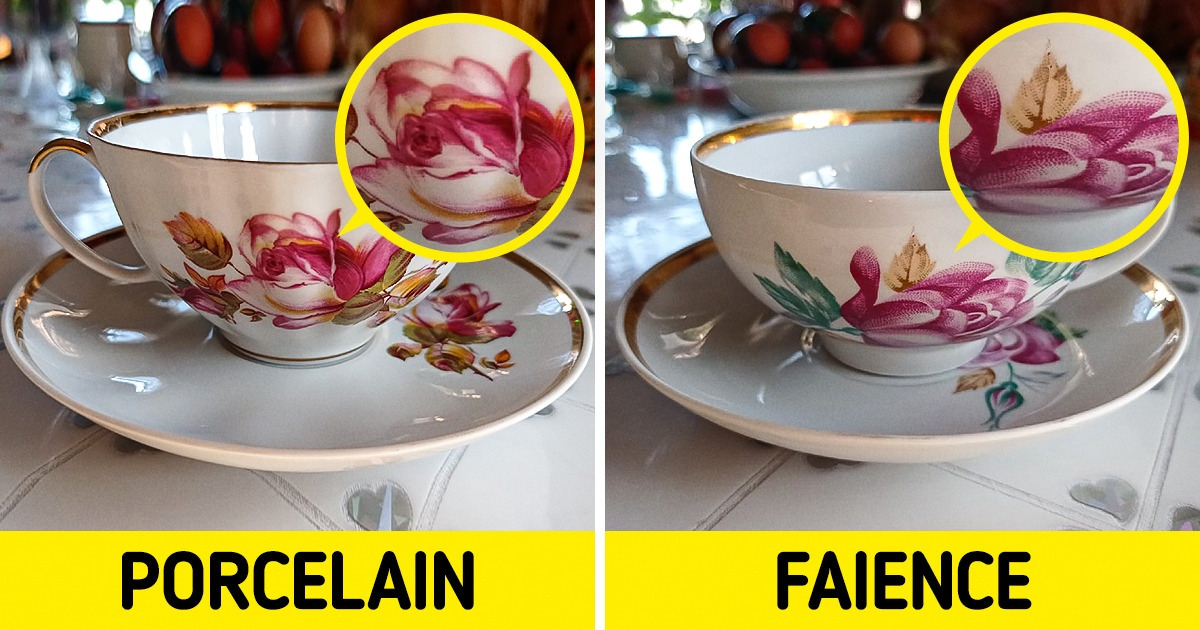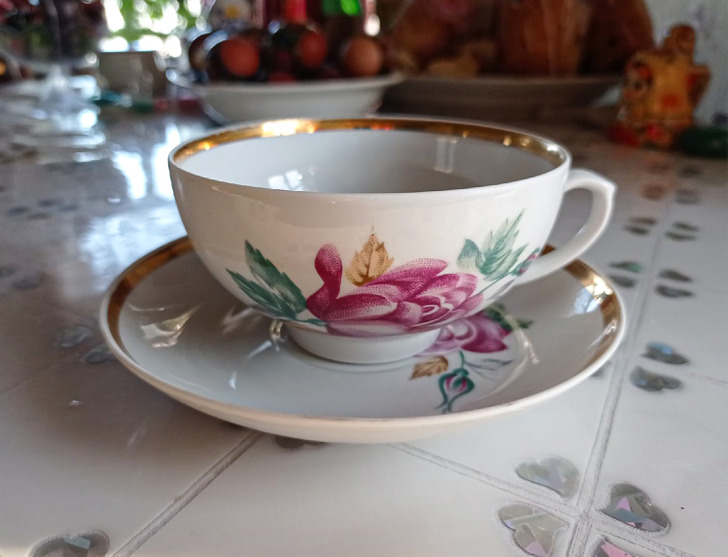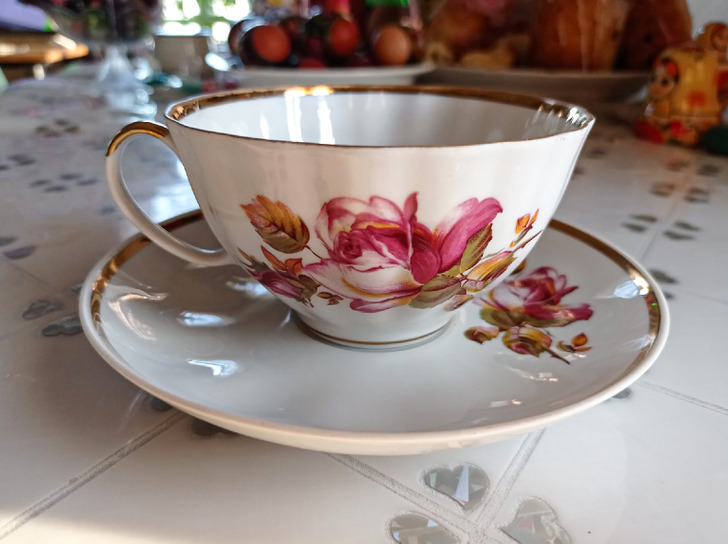
The Difference Between Faience and Porcelain
Faience and porcelain are types of ceramic materials that look very much like each other and have similar production processes. But it’s not easy to tell them apart if you don’t know some nuances.
5-Minute Crafts knows a few ways to tell faience apart from porcelain.
What faience is

Faience is a type of ceramic covered in a thin, non-transparent glaze. Faience contains silica, alkaline salts, minor amounts of lime, and a metallic colorant. During the production process, an item is fired in an oven at 1,830°F, twice. First, the item is fired without the glaze. After that, it’s dipped in glaze, dried, painted, and then fired again.
The production of faience and porcelain is very similar. But faience is far less thick than porcelain. It’s also not as white and transparent as porcelain.
What porcelain is

How to tell faience from porcelain
- Check the bottom of the item. If it’s covered with glaze, this is definitely faience. Due to production technologies, porcelain items are never glazed at the bottom.
- If there is no glaze at the bottom but you still have doubts, put a drop of water on the surface. If it’s faience, the water will be absorbed within several seconds.
- Gently tap on the surface and listen. Porcelain sounds like a bell even when you barely touch it. When faience is touched, the sound is lower and less loud, a bit like solid plastic.
- If you look at a porcelain item under a powerful source of light, you may notice light going through the material. Faience remains non-transparent.
- Vert often, faience items are more colorful than porcelain ones because the fire temperatures are much lower. Some paints are partially destroyed at such temperatures. Porcelain is also painted on top of the glazing due to the temperatures.
- There might be cracks on faience items over time, and they might fade in color. Porcelain is more durable in all ways.